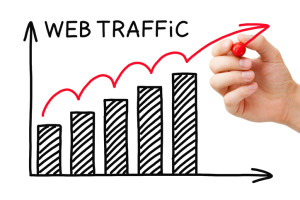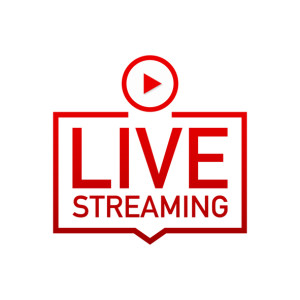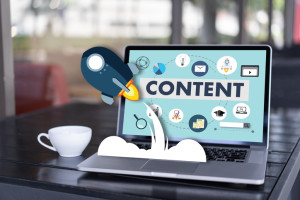17 Ways to Boost Your Website Traffic by Live Streaming Events Globally
Hosting a successful event is a challenge. I know that intimately. I’ve organized events at which only one person showed up. Literally, just a single person. Talk about embarrassing! However, I’ve also organized events that had 1000 people in the audience, and thousands more joining in from afar.
So what made the former example a failure and the latter a success? Simply put, I learned to incorporate key ways to boost my website traffic and get more viewers. As a result, those strategies helped me to host a successful live streaming event on a global scale.
Now, let’s take a closer look at how you can boost your website traffic and stream live events with confidence.
How can you get more viewers, a larger audience, and greater success?
Overall, the difference between success and failure in live streaming events comes down to several factors. Of course, the event itself has to be good. Likewise, people have to want to be there. In short, no matter what live event you plan to host, It has to be worth your audience’s time and money.
Beyond these more obvious factors, however, it gets more complex.
 What if I told you there was a method to:
What if I told you there was a method to:
- triple your website traffic,
- bring your events to a global audience, and
- use streaming solutions that are simple and cost-effective?
The good news–that’s the focus of this blog article! In the sections that follow, I’ll cover how to leverage your chosen live streaming platform to boost website traffic—potentially by a large amount. First, we’ll review video live streaming in general, as well we how organizations are using streaming solutions today to increase viewership numbers. Next, we’ll consider some key stats and trends on the potential of video content to boost your website traffic. We’ll also discuss how, compared to even a few years ago, live streaming is accessible and affordable to broadcasters of all kinds.
Finally, with that context in mind, we’ll turn to the heart of this piece–seventeen ways to boost website traffic and reach a global audience. Let’s get started!
Get more viewers with live video
As the topic of this post implies, the ideal method to increase viewership is via video live streaming. In fact, it can change nearly everything about how you run events!
Before live-streaming technology, events were limited by venue size, budget, parking, and much more.
Today, those limitations no longer hold. In almost all cases, live streaming allows you to completely disregard these barriers and reach a global audience. For example, you can hold a small, intimate event in your home or office. And simultaneously, you can reach thousands or even millions of people around the world.
Essentially, live streaming allows everyone to become a TV broadcaster. Even better, it comes without the major expense or the hassle of competing with others for limited airtime. And with live streaming, you can reach every person with an internet connection. Last we checked, that number was 3.9 billion, up from 3.65 billion in 2018.
How organizations use streaming to reach global audiences
In recent years, many real organizations have begun to use live streaming to build their audiences. To name one common example, Twitter began live-streaming Wimbledon matches in 2016. Likewise, NCAA sports live streaming has been popular for years.
General Electric has also used live streaming to reach 20,000 viewers via Periscope. The company launched a low cost, high-reward campaign, a model that many other businesses now use. Relatedly, Super Bowl 50 broke many live streaming records, and that trend continues today.
In terms of website hits specifically, all of these organizations have used live streaming to boost their website traffic:
 Nissan
Nissan- Nestlé
- General Motors
- Red Bull
- Taco Bell
- Mountain Dew
- Duncan Donuts
- The Tonight Show
- U2
- Spotify
- Target
- DKNY
Even Broadway plays are beginning to stream live online. And the above live represents only a tiny fraction of the kinds of businesses capitalizing on streaming technology to boost website traffic and reach new viewers. Let’s take a more concrete look now at how video can drive website traffic.
How video drives website traffic and conversions
As I mentioned above, video is driving website traffic and helping countless businesses succeed on new levels today. With that context in mind, let’s put some actual numbers to the growth in live streaming use-cases and accessibility over the past decade.
Here are a few salient stats on video’s ability to drive website traffic:
Marketers who use video receive 41% more web traffic from search than non-users.
52% of users will stay on a website longer if it features video.
Marketers who use video grow revenue 49% faster than those who don’t.
Videos appear in over 52% of Google keyword searches—usually at the top of the list.
Website visitors are 64% to 85% more likely to buy a product or service after viewing a video about it.
57% of the people who watch a nonprofit’s video go on to donate to that organization.
Online video ads are the most effective type of online ad. They have a 3x higher click-rate than text or image ads.
92% of shoppers say visuals are the most important factor influencing their purchase.
Online video ads are as effective or more effective than TV ads. This has driven an 88% increase in interest in video ads.
One in three millennials has purchased a product as a result of watching a tutorial or how-to video.
These statistics point to one conclusion: a video is a powerful tool for your business.
Live streaming is easier than ever before
It used to be the case that live streaming was overwhelming. The number of options and the technical knowledge required to start streaming live video was huge. Thanks to a revolution in technology and UX, those days are now over. With the right streaming solutions, now anyone can get started in live streaming with a minimum of fuss.
The market is full of choices
You can live stream using apps like Periscope, Meerkat, Lively, Blab, and Facebook Live. They’re free, easy to use, fast, and simple. Just pull your phone out, point at the action, and start streaming.
 However, some people need a more robust solution. And most businesses definitely want a pro online video platform, rather than free B2C apps. In those cases, I’d recommend a live streaming video host. Though not as simple as streaming with an app, the advantages are huge -, especially for businesses!
However, some people need a more robust solution. And most businesses definitely want a pro online video platform, rather than free B2C apps. In those cases, I’d recommend a live streaming video host. Though not as simple as streaming with an app, the advantages are huge -, especially for businesses!
Live stream video hosts like IBM Cloud Video, Vimeo, and Dacast offer advanced video hosting features that aren’t available on other platforms. For example, they allow fine-tuned access control over who can and can’t view content. In addition, they allow you to maintain rights to your content without 3rd party branding or ads. That way, when you increase website traffic to your site, your viewers stay connected to your content, product, event, etc.
Overall, some key features to seek in a live streaming platform include:
- Monetization (sell access to your live stream, for example by PPV)
- API support (full control over your content, build your own app around your live stream)
- Advanced analytics and user tracking
- Secure content delivery
- Geo and referrer restrictions
- FTP upload
- Playlists and packages
- Customize streams with your branding
- Player embedding on any website
Of course, learning how to do successful live streaming from start to finish is beyond the scope of this post. If you want to learn more about that topic, however, check out our earlier post on the subject. (While you’re at it, you can peruse our large and frequented updated library of blog articles on all things streaming, both live and VOD.)
With that intro and overall discussion in mind, let’s dig into our list of seventeen ways to boost your website traffic with a streaming video host!
17 ways to boost website traffic
As I mentioned earlier, creating a successful live event successful can be challenging. Leveraging that success to increase your website traffic can be even more difficult. However, some simple (and not so simple) techniques can help. We’ll start with a number of recommendations that you can put into practice before your event beings.
BEFORE YOUR LIVE STREAM
1. Conduct targeted research with a global focus
The first element of your marketing plan has to research. Specifically, you need to answer the question “who is your audience?”
Also, you want to be specific with your answer. Gather names, websites, and contact information for individual people. Focus especially on your biggest fans, partners, or friendly media. You can store the information you gather into a database or CRM system to track outreach. If you prefer a simpler method, however, just make a list and keep notes.
The method doesn’t matter. You just need to gather information on your target audience.
 Next, research the communities who are interested in your event. Look for:
Next, research the communities who are interested in your event. Look for:
- Community groups
- Businesses
- Non-profits
- Partner organizations
- Government agencies
- Fan communities
- Forums
- and so on.
These gatherings will be critical to later marketing steps.
Finally, look for social media celebrities. Bloggers, podcasters, YouTubers, and other thought leaders online can help get more viewers and drive website traffic to your content. In addition, these individuals can become allies later in the process. No matter how your outreach looks, the first step is knowing who are your people.
2. Determine high-priority outreach targets
From your initial target audience list, you’ll then need to decide who are your primary targets. Who can’t stop talking about you? Who are your biggest fans? And whom do you impact in critical ways? And who has a major audience and might actually help promote your event?
These initial questions may seem boring. They don’t actually move things forward. Yes, they take time to answer. And the results may be a long time coming. However, if you want to host a successful event, this sort of planning and research is critical. In fact, it will determine how you spend your time and resources down the road.
3. Pick an ideal date
For any event, choosing the right date is critical. You want to judge the goal of your audience members and the attitude they will bring.
 For example, if you’re planning a work-related or professional live stream, Monday and Friday may be poor choices. On Monday, people tend to need to focus on catching up on messages and getting on top of things. On Friday, on the other hand, people are checking out early and heading home.
For example, if you’re planning a work-related or professional live stream, Monday and Friday may be poor choices. On Monday, people tend to need to focus on catching up on messages and getting on top of things. On Friday, on the other hand, people are checking out early and heading home.
Webinar company ON24 conducted a survey of more than 7,000 events. They found that events held on Tuesday, Wednesday, and Thursday had by far the best attendance. Overall, people were 3 times more likely to attend mid-week compared to Monday. Relatedly, mid-week events were 4 times more popular than Friday events, and 25 times more popular than a weekend event.
The bottom line? Plan your live event for a Tuesday, Wednesday, or Thursday (if it’s work-related).
But of course, this is all circumstantial. In other words, your particular event situation determines the best time for your event. For example, if you’re running an event for entertainment purposes, weekends and evenings are probably the best time. Concerts, plays, and comedy shows, for example, all fall into this category.
You should also consider other events happening in your city or town, as well as:
- National holidays
- Major sporting events
- Planned road closures
- Likely weather conditions
- and so on.
Finally, if you plan to target a specific audience, you need to research the same issues in their region. For example, don’t make the mistake of scheduling a product demonstration focused on the Chinese market on the Chinese new year!
4. Use a hashtag
As with other contexts, choosing the right hashtag for your live-streamed event is important. It’s how people will communicate about your event on social media. The ideal hashtag is short, memorable, and simple. The wrong hashtag, on the other hand, could doom your social media efforts to failure.
Events often use the name or acronym of the event, plus the year. For example, #SXSW2016. Whatever you do, make sure nobody else is using that tag, and be consistent throughout your campaign!
5. Develop a marketing plan
 Let’s say you’ve done the first four steps on this list. So, you now have a good sense of who your audience is, your date and location, and the social media tags you’re focused on. Next, it’s time to develop a cohesive marketing plan.
Let’s say you’ve done the first four steps on this list. So, you now have a good sense of who your audience is, your date and location, and the social media tags you’re focused on. Next, it’s time to develop a cohesive marketing plan.
A successful plan should leverage the high-priority outreach targets identified earlier. Think of those people as amplifiers. It’s your job to get them talking.
For example, consider sending out a message like this:
Hi there! This is Max from Dacast. We’ve noticed that you share a lot of stories about our business on your social media channels. Thank you for that! We’re hosting an upcoming webinar on the business of live streaming, and we thought it might interest you. It’s on January 1st at 1am. Would you be willing to help us spread the word?
Pro tip: swag helps. Try offering t-shirts, stickers, free service, and more to your biggest fans. It can go a long way toward building goodwill.
Your marketing plan should also leverage blogging, SEO, and traditional media. Place event details in local newspapers, weeklies, magazines, and trade journals. Consider also reaching out to publications in areas where you have a strong audience.
Ideally, your plan should have a number of stages. Each stage should include different “teasers” to get people excited about the event. Make a final push-starting 14 days before your event. About 84% of attendees tend to register during this period.
Do note that a full explanation of a marketing plan is beyond the scope of this article. Nonetheless, it’s important that you create one for any broadcasting live event.
6. Continue to generate buzz
Once you have a plan, it’s crucial that your team follows through on it consistently.
Specifically, you want to generate “buzz” around your event. Buzz happens when other people spread the word for you. That means sparking conversations among the community itself, which in turn drives website traffic to your event page. The goal here is to get more viewers excited before the event.
Social channels like Reddit and Facebook, to name only two, can be great for this.
7. Consider live translators and interpreters
 One obstacle in reaching a global audience is language barriers. Fortunately, it’s becoming less of a problem in recent years.
One obstacle in reaching a global audience is language barriers. Fortunately, it’s becoming less of a problem in recent years.
Services like Interprenet, for example, allow you to embed audio or closed captioning in other languages. This can be done by interpreters (oral) and translators (written) in far-off locations. Even better, you can do this all in real-time, too.
To learn more about live interpreters and speech to text, check out this blog post from Wired Watershed. There, they describe more details about how this process works, and it even features a nice Dacast cameo!
8. Invest in quality
There’s nothing that will make someone leave a broadcast faster than quality issues. According to data from video experts at Conviva, about 20% of viewers stop watching a video immediately if the quality is poor. Another 25% are quick to leave if buffering becomes a problem.
The lesson is simple: quality is important. And to achieve good quality during your broadcast, you need to invest in planning now.
That means securing a fast, dedicated internet connection, effective lighting, and quality camera equipment.
9. Always include links to your website
In all your promotions, you should attempt to drive website traffic–back to your website specifically. After all, you want to get more viewers to tune into your content page!
This is pretty simple to achieve. Just include links in every press release, message, email, blog, video, and social media post. In short, drive all website traffic back to your site. Give people a reason to visit. That can be to purchase tickets, enter a drawing, get a coupon code, watch a sneak preview, or something else. Even a simple webcam stream can more than double website traffic. A true live streaming event, however, can do even better.
10. Organize viewing parties
Finally, let’s review one last element of pre-event planning: Consider organizing viewing parties.
We’ve seen this mostly around sporting events, with fans packing outdoor areas and empty stadiums. One watch party for the 2016 NBA finals sold 20,000 tickets in one minute. Yes, 60 seconds. That’s more than 300 tickets per second!
Most likely, your event won’t be that popular. Even so, watch parties are an effective marketing strategy to get more viewers. Even for business events, watch parties increase attendance, excite the crowd, and create more of a “live event” feeling. Especially if there is popcorn!
During Your Live Stream
11. Encourage attendees to Tweet, Instagram, and use other platforms
 To build excitement around your event, you need the crowd to help. That’s why you should encourage the audience to live Tweet, share photos on Instagram, and post to Facebook. It can even help to allow attendees to live stream themselves!
To build excitement around your event, you need the crowd to help. That’s why you should encourage the audience to live Tweet, share photos on Instagram, and post to Facebook. It can even help to allow attendees to live stream themselves!
That final tip may seem counter-intuitive. However, keep in mind that if each live streamer brings in 100 additional viewers, your audience is growing.
12. Keep it short
The length of online events is critical to success.
In general, you should strive to keep it short. More concretely, many studies show that viewers rapidly lose interest after just a few minutes of online video.
13. Continue to promote
Throughout the event, you can continue to promote and build your audience.
The simplest way to do this is to continue sharing updates on your email list, social media platforms, blog, and partners.
You can reach a lot of people last minute. And when the message reads, “come watch now, we’re streaming live,” a sense of urgency is created.
14. Make the beginning of your live stream engaging
 There’s a reason why Vine, Instagram, and Snapchat videos are so brief. Simply put, viewers today have unprecedentedly shorter attention spans than in previous decades.
There’s a reason why Vine, Instagram, and Snapchat videos are so brief. Simply put, viewers today have unprecedentedly shorter attention spans than in previous decades.
Like, really short. 8.25 seconds short.
Any analysis of video viewers shows that there’s a huge decline in viewership right at the beginning. This points toward the importance of making your video start with a bang. In other words, you need to hook people in right away. Otherwise, they’re gone.
With that in mind, whenever you’re planning a stream, make sure the beginning is well planned and well-executed. It will pay off in terms of boosting your website traffic.
15. Make it interactive
The most successful and professional live streamers engage their audience through chat, polls, and social media. This creates a better experience for viewers. Relatedly, it can also be leveraged to drive website traffic.
Any participation in the conversation should be honest (remember, give first). That said, you should be able to sneak in some links here and there!
16. Provide materials and resources during your stream
Here’s another one on the subject of giving. If you want to garner more website traffic and get more viewers, then you have to offer something to your audience.
One great type of content to give away is material from live streams. This could be PDFs, slideshows, recordings, music, and so on. As always, you should host this type of content… on your website! You could even consider building a mini-landing page for these materials and include email signup or other forms. This can drive more website traffic and build your lists.
AFTER YOUR LIVE STREAM
17. Continue to share and promote your video after the event is over
When a live event is over, it isn’t really over.
 You recorded it, didn’t you? That content is valuable.
You recorded it, didn’t you? That content is valuable.
After live events end, ON24 found what they called a “long tail.” Many people still continued to watch the content—in some cases, more than those who watched live. In fact, 87% of views happened after the fact. That’s a huge number!
Once a live stream is over, the possibilities for generating website traffic and views can continue for quite a while. Therefore, continue promoting and sharing your content after the fact. Consider repackaging it, sharing teasers and trailers elsewhere, and licensing for external broadcast. Of course, there are a lot of other ways to continue to get value from that material. So get creative!
Does live streaming an event lower in-person attendance?
Especially when live streaming was first becoming popular, this was a common concern. However, studies have since found the opposite to be true in almost all cases!
For almost every event, live streaming increases people’s desire to attend in person. Many people who attend events via live stream may attend in person next time it is held. For example, ON24 found that rate to be an astonishing 42.9 percent. For conferences, unsurprisingly, the conversion rate is lower, but still significant—about 10-30 percent.
As another example, consider the Super Bowl.
 As I’m sure you know, the Super Bowl is a massive event with a global following. The broadcasters capitalize on this by allowing streaming only in two ways:
As I’m sure you know, the Super Bowl is a massive event with a global following. The broadcasters capitalize on this by allowing streaming only in two ways:
- Via their own website (which they control and monetize via ads)
- On television (which is much the same).
In other words, they keep the whole thing contained, which drives website traffic to their site. And it works! Super Bowl 50 had 71,088 attendees, but guess how many more watched via internet live stream…
Nearly 4 million. That’s 55 times more viewers than showed up in person.
Conclusion
It’s not easy to make an event successful. And to make a live-streamed event successful does require a few more steps and know-how. That said, it can pay MAJOR dividends. For example, people talk about great events for years—maybe even for the rest of their lives. And that’s the type of exposure we all could use, no matter the focus of our live event.
Putting on a great event requires exceptional content. In addition, it requires marketing and technology to reach the right audience and get more viewers than could attend in-person. With the tools provided in this blog, however, you should be able to go global with success! In turn, that boost can increase your website traffic, too. And as we all know, that’s a critical element of success in modern business.
In today’s video-heavy world, there are many pro streaming solutions from which to choose. However, not all platforms offer the same features, support, and rates, so take some time to compare options. If you’re not sure where to start, we hope you’ll consider the Dacast OVP. We offer a free 14-day trial (no credit card required) so you can test our platform features for yourself. Even better, all Dacast broadcasters get 24/7 tech support, which is crucial for live event broadcasting.
And do share your questions and comments below. We love to hear from our readers, and we will get back to you.
Finally, for exclusive live streaming offers and tips, you can join our LinkedIn group.
Thanks for reading, and good luck with your live event broadcasts!
 Stream
Stream Connect
Connect Manage
Manage Measure
Measure Events
Events Business
Business Organizations
Organizations Entertainment and Media
Entertainment and Media API
API Tools
Tools Learning Center
Learning Center Support
Support Support Articles
Support Articles
 Nissan
Nissan